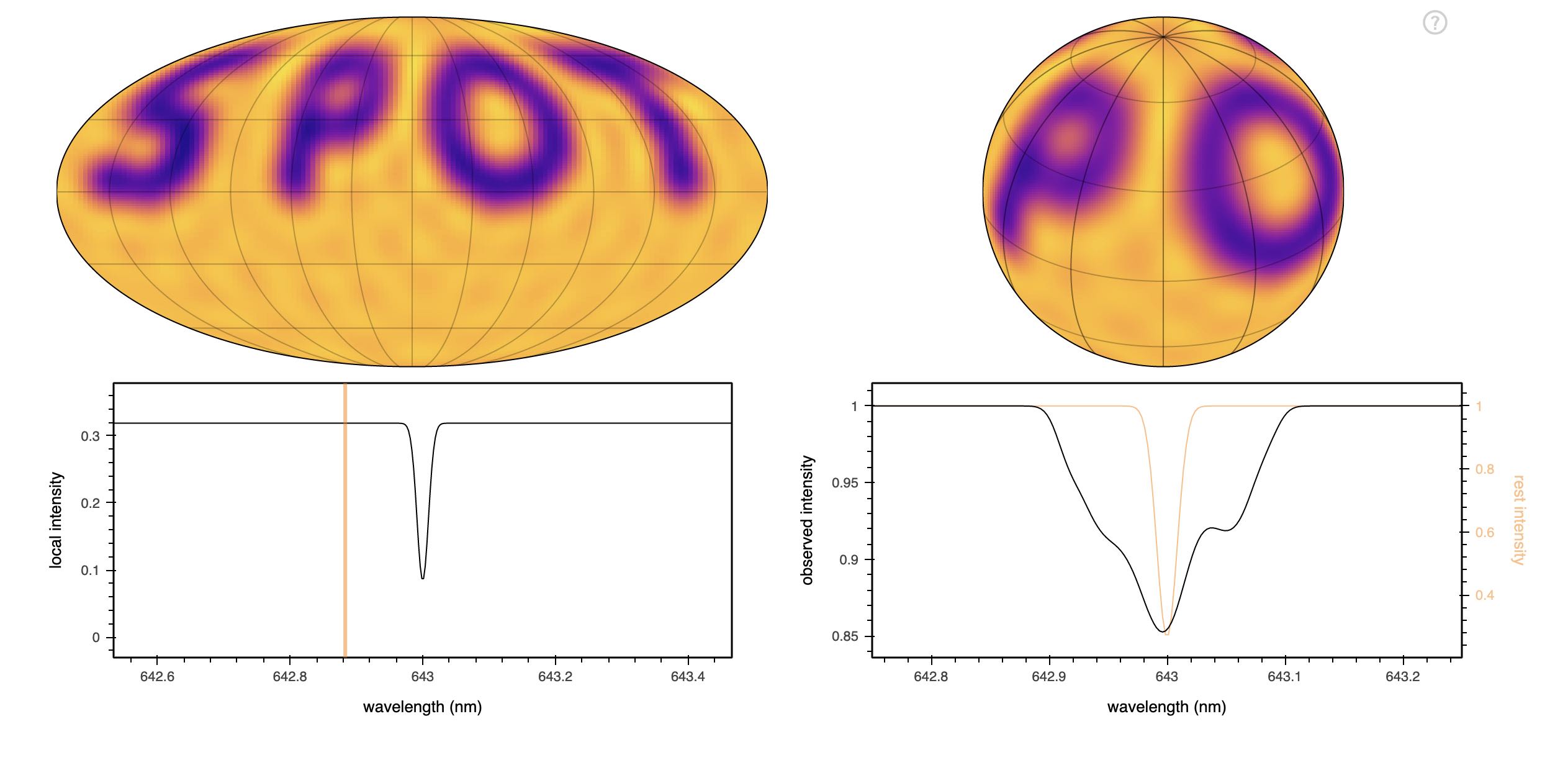The study of stellar surfaces can reveal information about the chemical composition, interior structure, and magnetic properties of stars. It is also critical to the detection and characterization of extrasolar planets, in particular those targeted in extreme precision radial velocity (EPRV) searches, which must contend with stellar variability that is often orders of magnitude stronger than the planetary signal. One of the most successful methods to map the surfaces of stars is Doppler imaging, in which the presence of inhomogeneities is inferred from subtle line shape changes in high resolution stellar spectra.
In my latest paper,
I implemented this Doppler imaging model within my open source starry stellar modeling framework, making it fast, differentiable, and easy to use in both optimization and posterior inference settings.
As a proof-of-concept, I used starry to infer the surface map of the brown dwarf WISE 1049-5319B, finding close agreement with the solution of Crossfield et al. (2014). In the paper, I also discuss Doppler imaging in the context of EPRV studies and describe an interpretable spectral-temporal Gaussian process for stellar spectral variability that will be important for EPRV exoplanet searches.
